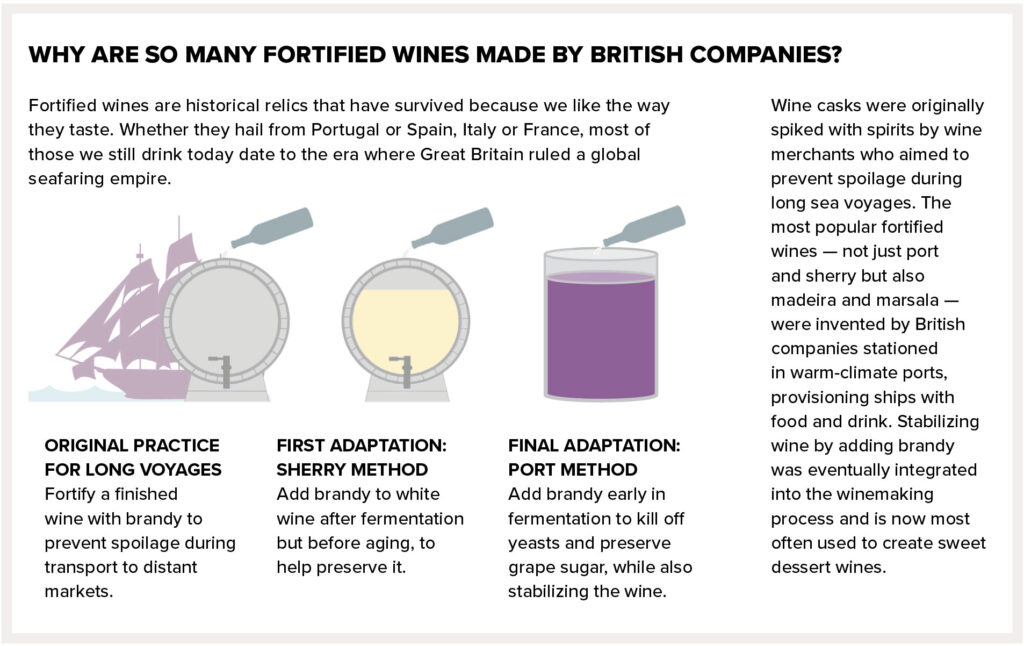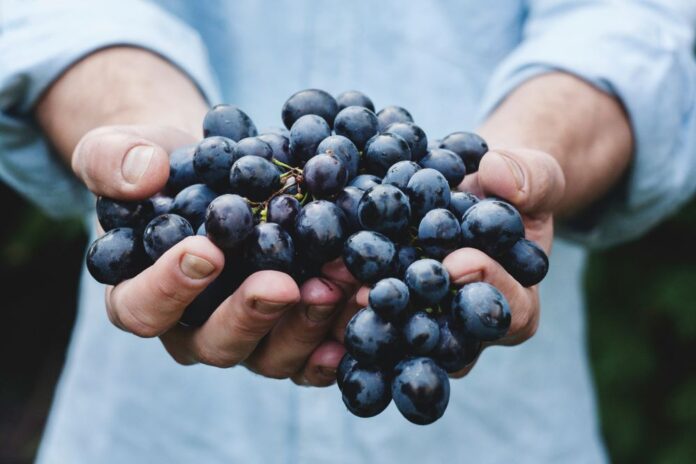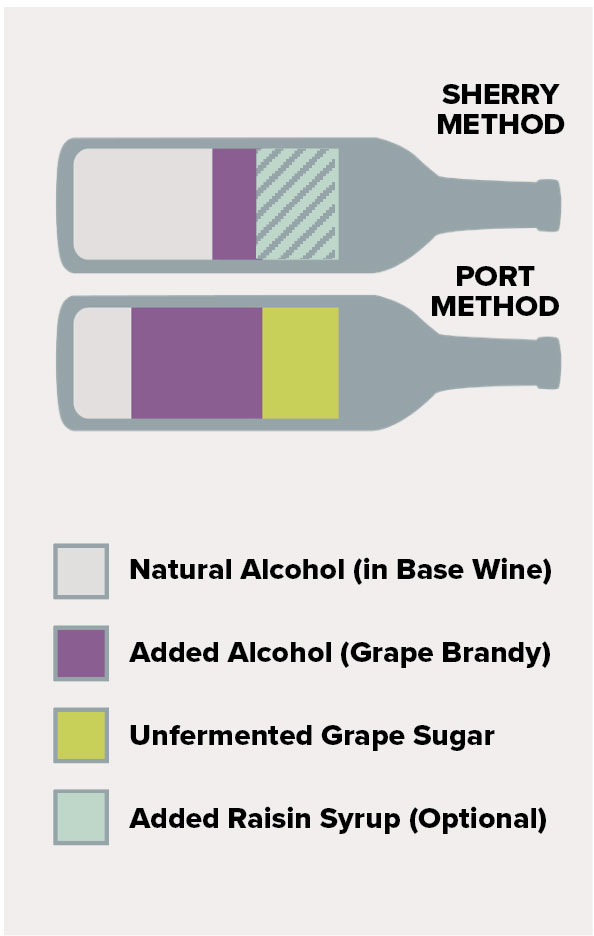Fortified wines are wines to which distilled spirit has been added at the winery. They usually contain 15 to 20% alcohol, so they taste stronger and feel heavier than standard wines, and are served in smaller portions.
Any kind of still wine can be fortified, but those which are most popular tend to be sweet. The two most famous fortified wines each use a different production method. These are red port from northern Portugal, and the sherries of Spain’s Andalucia region, whose formal appellation is Jerez-Xérès-Sherry.
Wines made using the older sherry method begin as standard dry white wines, which are then fortified with a grappa-like grape brandy and aged in casks. Sherries may or may not be sweetened with a raisin syrup, so they can range from pale bone-dry styles like manzanilla, to dark, sticky-sweet treats like cream sherry.
The port method, also known as mutage, is a more recent innovation that makes sweet wines only because distilled spirit is added much earlier, during fermentation. Since most yeasts cannot tolerate alcohol levels over 15%, adding brandy halts fermentation abruptly and guarantees a sweet dessert wine.

Feature photo by Maja Petric on Unsplash.
Marnie Old is one of the country’s leading wine educators. Formerly the director of wine studies for Manhattan’s French Culinary Institute, she is best known for her visually engaging books published by DK such as Wine: A Tasting Course and her popular Wine Simplified series of wine tutorials on YouTube. Marnie currently serves as director of vinlightenment for Boisset Collection. Read her recent piece How Sparkling Wine Works.





